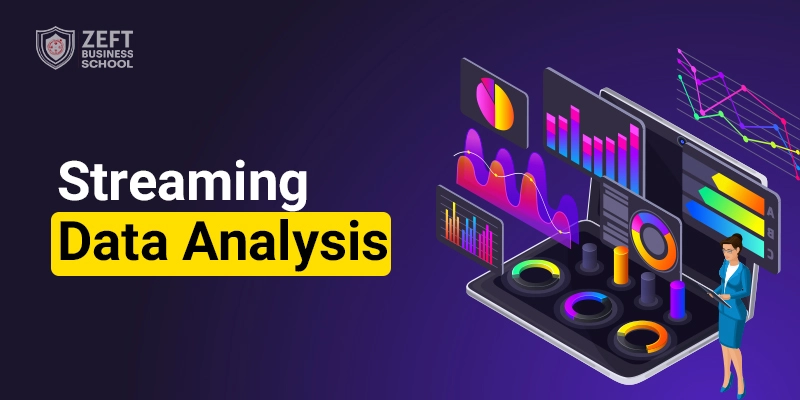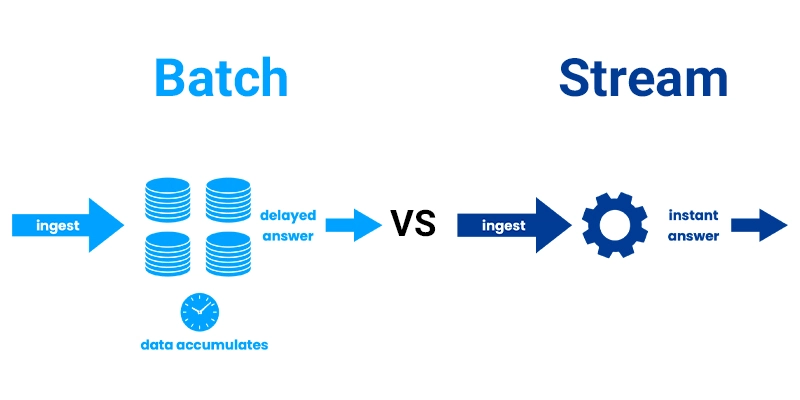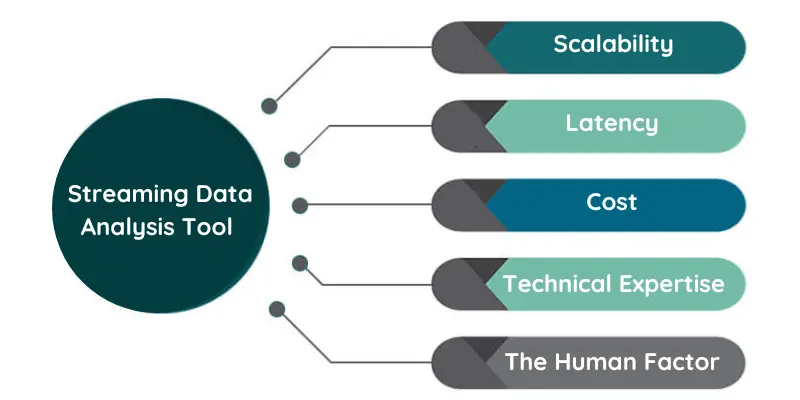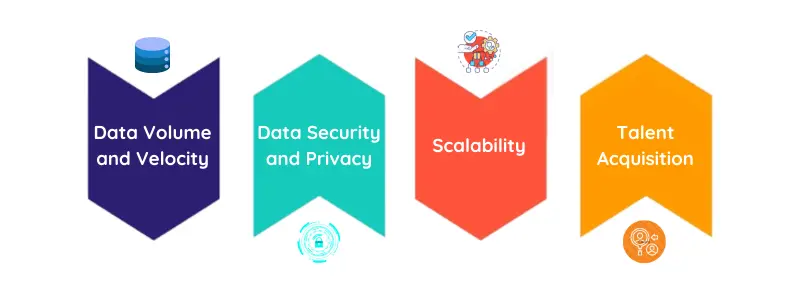In today’s data-driven world, information is king. But what if you could analyse and act on that information the moment it’s generated? This is the transformative power of real-time analytics or (real-time data analytics), and streaming data analytics.
This blog dives deep into this dynamic field, exploring its applications in fraud detection, stock market analysis (focusing on the share market today and beyond), and personalized marketing, all while examining the crucial business analyst roles and responsibilities that make real-time analytics function.
What is Streaming Data Analysis?
Let’s break down the key concepts. Imagine a constant flow of data – sensor readings from a factory floor, customer clicks on a website, or stock market prices fluctuating by the millisecond. Streaming data is a continuous deluge of information that needs immediate processing.
Traditional data analysis involves processing information in batches, often collected over time. This can lead to delays in insights, especially when dealing with fast-moving data sources.
On the other hand, Streaming analytics, also known as stream analytics or real time streaming analytics, empowers businesses to analyse a continuous flow of data – generated in real-time. It originates from various sources, such as social media feeds, sensor data from the Internet of Things (IoT), customer clicks on a website, financial transactions, or stock market prices fluctuating by milliseconds. Unlike traditional data analysis, which involves processing information in batches, often collected over time, streaming data analytics works with this real-time data stream, enabling immediate insights and fostering proactive decision-making.
Real-time analytics is the process of analysing this continuous stream of data as it arrives, enabling immediate insights and fostering proactive decision-making. Business analysts skills are crucial in understanding the requirements for real-time data analysis projects. They act as business translators bridging the gap between the needs and technical capabilities, ensuring that the chosen streaming data platform and analytics tools effectively translate raw data into actionable insights.
The Key Difference: Batch vs. Stream
| Feature | Traditional Data Analytics | Streaming Data Analytics |
| Data Processing | Processes information in batches | Analyses data as a continuous stream |
| Data Source | Well-defined datasets collected over time | Real-time data streams like social media, sensors, and financial transactions |
| Insights | Provides historical insights and trends | Enables immediate insights and proactive decision-making |
| Latency | Lower latency, as analysis can be completed after all data is collected. | High latency is a concern, as results need to be delivered as close to real-time as possible. Trade-offs may be needed between accuracy and speed. |
| Scalability | Typically scales well horizontally by adding more processing power. | Requires specialised streaming data platforms and real-time processing engines to handle the high volume and velocity of data. |
| Security | Security considerations are similar to traditional data storage. | Requires robust security measures to protect sensitive information in real time. Compliance with data privacy regulations is paramount. |
| Use Cases | Understanding customer behaviour over time, identifying long-term trends | Fraud detection, stock market analysis (including share market today trends), personalised marketing |
Think of it like this: Traditional analytics is like watching a pre-recorded movie – you see the story unfold, but there’s no way to influence the plot. On the other hand, real-time analytics is like being live at a play – you can see the action unfold in real time and react accordingly. Here is where the role of Business analysts becomes crucial in setting the stage for real-time insights.
Translating real-time data into actionable insights is a skill in high demand across industries. An MBA in Business Analytics in Chennai can provide you with the essential foundation to excel in this dynamic field.
Streaming Data Analysis tools
Real-time analytics unlocks a treasure trove of possibilities, but the magic doesn’t happen on its own. Specialised streaming data analytics tools are the powerhouse behind processing and analysing this continuous flow of information. However, to leverage these tools effectively, the role of business analysts is crucial.
Understanding Business Requirements
Business analysts act as liaisons, collaborating with stakeholders to identify their goals and challenges in the context of real-time data analysis projects. This understanding translates into defining the technical requirements for the chosen streaming data analytics tool.
Tool Selection Considerations
Factors like scalability, latency, cost, and existing infrastructure are all considered during the selection process. Business analysts collaborate with data engineers to assess these factors and identify the streaming data analytics tool that best aligns with the business needs.
Communication and Alignment
Business analysts act as a bridge between technical teams and stakeholders. They communicate the capabilities and limitations of different streaming data analytics tools to stakeholders and ensure everyone is aligned on the chosen solution.
Many MBA Colleges in Chennai offer specialised programs in Business Analytics. These programs provide a comprehensive foundation in data analysis techniques, business modeling, and communication skills – all essential for success in real-time analytics.
Let’s delve into some of the key stream analytics tools in this space:
Apache Kafka
This open-source platform is a heavyweight in streaming analytics. It acts as a central hub, ingesting data streams from various sources and making them readily available for real-time processing applications. Think of it as a central nervous system for your streaming data pipeline.
Apache Flink
Another open-source powerhouse, Flink excels at real-time analytics and stream processing. It can handle high-volume data streams with low latency, enabling real-time insights and fast decision-making.
Apache Spark Streaming
Spark Streaming is part of the famous Apache Spark ecosystem and offers a robust framework for processing streaming data. It allows developers to write code using familiar languages like Java, Python, and Scala, simplifying the development process for real-time analytics applications.
Amazon Kinesis
This cloud-based platform offered by Amazon Web Services (AWS) provides a suite of services for capturing, processing, and analysing real-time data analytics streams. It’s a comprehensive solution for businesses already invested in the AWS ecosystem.
Google Cloud Dataflow
This offering from Google Cloud Platform (GCP) allows users to build and manage real-time and batch data processing- data pipelines. Dataflow provides a serverless environment, eliminating the need for infrastructure management and making it a scalable and cost-effective option.
Considering an MBA in Analytics?
Chennai boasts a vibrant educational landscape with several reputable institutions offering MBA programs. The cost of an MBA can vary based on the specific program, college reputation, and factors like specialisation. To get a better understanding of MBA Course Fees in Chennai, it’s recommended to research the programs that interest you and to estimate the ROI (Return on investment).
Factors to Consider While Choosing the Right Tool
The best streaming data analysis tool depends on your specific needs and infrastructure. Here are some key considerations:
-
- Scalability: Can the platform handle your current and projected data volume?
- Latency: How vital is real-time processing for your use case?
- Cost: Open-source options may be cost-effective, while cloud-based solutions offer flexibility but may come with ongoing costs.
- Technical Expertise: Consider your team’s skillset and familiarity with different platforms.
- The Human Factor: Data engineers, data scientists, and business analysts, all with expertise in streaming technologies and data analysis, form a critical team. However, business analysts’ skills bring a unique perspective to extracting meaningful insights from the data stream.
The role of an MBA Business Analyst Professional in real-time analytics is critical. Their ability to bridge the gap between the business world and the technical aspects of data analysis unlocks the true potential of this technology.
Applications of Real-Time Analytics
Analysing data in real-time unlocks numerous possibilities across various fields. In this section, let’s explore how real-time analytics and streaming data are revolutionising specific industries:
Fraud Detection
Financial institutions use real-time analytics to monitor transactions for suspicious activity. By analysing factors like location, time, and purchase amount, they can instantaneously analyse transaction patterns, identify anomalies, and flag suspicious activity. This allows immediate intervention, potentially saving millions and protecting customer accounts.
Imagine a scenario where a customer makes a large, out-of-character purchase from a geographically distant location. Traditional systems might analyse this later, potentially leading to a successful fraudulent transaction. Real-time analytics, however, can identify this anomaly as the purchase happens, allowing the bank to contact the customer and potentially block the transaction.
Stock Market Analysis
The stock market is a dynamic beast, and real-time analytics empowers investors and traders to make informed decisions based on the latest market movements. By analysing streaming data such as news sentiment, social media trends, and real-time trading activity, they can identify opportunities and react quickly to market fluctuations, potentially influencing the share market today and beyond.
For instance, a spike in negative news about a particular company might be picked up by real-time analytics, prompting an investor to sell their shares before the stock price plummets. This highlights the value of real-time analytics in the fast-paced world of stock market analysis.
Personalised Marketing
Personalization is key to winning customers’ hearts (and wallets) in today’s competitive landscape. Real-time analytics allows businesses to tailor marketing campaigns and recommendations based on a customer’s real-time behaviour.
Imagine a customer browsing an e-commerce website for running shoes. Real-time analytics can analyse their past purchases and browsing history, suggesting similar shoes or complementary products like socks or running apparel. Streaming data analysis fuels personalization, boosting conversions and customer satisfaction.
SaaS companies can leverage the power of real-time streaming analytics to gain a real-time understanding of their customers’ needs and preferences. This empowers them to personalise the customer experience in powerful ways:
- Recommend relevant features: A well-timed in-app message or email suggesting relevant features can encourage exploration and increase customer satisfaction.
- Proactive customer support: Sudden spikes in support tickets around a specific feature might indicate a usability issue. Real-time analytics can flag these trends, allowing support teams to reach out to potentially frustrated customers before they churn proactively.
- Personalised marketing messages: Understanding a customer’s behaviour allows for targeted marketing efforts. Imagine a customer using a specific feature heavily – a personalised email campaign highlighting advanced features or premium plans can be highly relevant, increasing engagement and potentially driving upsell opportunities.
For a deeper dive into SaaS marketing and how to leverage customer data, check out our blog on SaaS Marketing Strategies. In that blog, we explore various customer-centric marketing tactics that can fuel your SaaS business growth.
Challenges with Real-time Analytics
While the benefits are undeniable, implementing a real-time analytics system comes with its own set of challenges. Here are some key considerations:
Data Volume and Velocity
The sheer volume and speed of streaming data can overwhelm traditional data processing systems. Businesses need robust infrastructure and skilled professionals to handle this data deluge.
Data Security and Privacy
Real-time data analysis often involves sensitive information. Data security and regulatory compliance are paramount.
Scalability
As data volumes grow, the system needs to scale efficiently to handle the increased load without compromising performance.
Talent Acquisition
The success of real-time analytics projects hinges on a skilled workforce equipped with data analysis prowess, streaming technology knowledge, and a solid grasp of business fundamentals. Finding and retaining such talent can be challenging.
So, why choose real-time analytics despite the challenges? Here are some key
Advantages of Real-time Analytics
- Faster Decision-Making: No more waiting for reports or historical data analysis. Real-time insights allow for immediate decisions based on the latest information.
- Enhanced Proactive Measures: Identify and address potential issues before they escalate, preventing financial losses or customer dissatisfaction.
- Improved Customer Experience: Personalise interactions and recommendations based on real-time behaviour, leading to higher customer satisfaction and loyalty.
- Streamlined Operations: Optimize processes based on real-time data, leading to increased efficiency and cost savings.
The Future of Streaming Data Analysis Tools
The future of streaming data analysis tools is bright. We can expect advancements in areas like:
Machine Learning Integration
Machine learning algorithms will be increasingly integrated with streaming data tools, enabling real-time anomaly detection, pattern recognition, and predictive analytics.
Simplified Development
With drag-and-drop interfaces and pre-built connectors, tools will become easier to use, making real-time analytics more accessible to businesses of all sizes.
Cloud-Native Solutions
Cloud-based streaming data analysis tools will gain popularity, offering scalability, elasticity, and ease of deployment.
Real-time analytics and streaming data transform how businesses operate, make decisions, and interact with customers. By investing in this technology and developing the necessary skillsets, businesses can unlock opportunities and gain a competitive edge in the ever-evolving marketplace.
Are You Ready to Dive into the Stream of Real-Time Insights?
The future belongs to those who can leverage the power of “now.” If you’re interested in a career in this exciting field, consider pursuing a Master’s in Business Analytics (MBA). Searching for MBA Colleges Near Me can help you find programs that provide the necessary foundation in data analysis, business acumen, and the skills to translate complex data into actionable insights.





